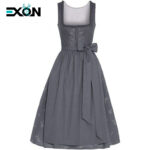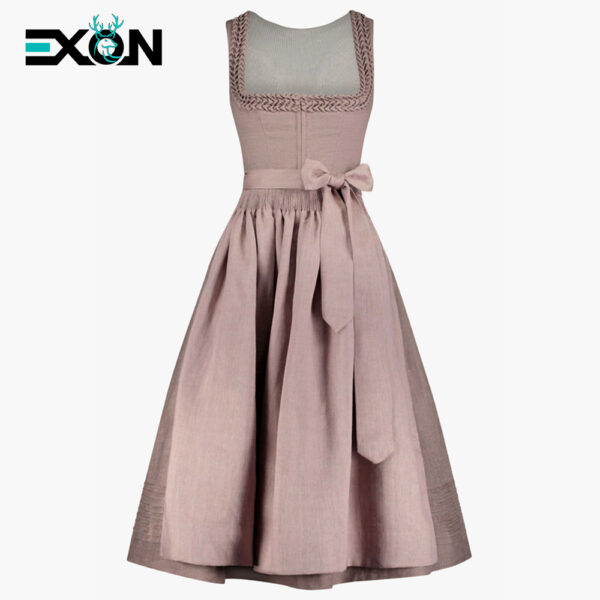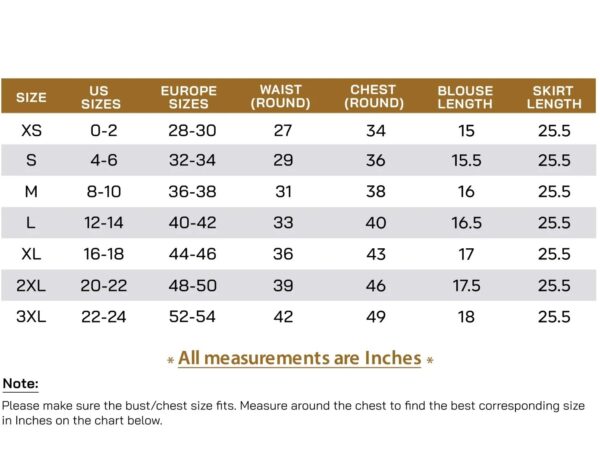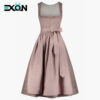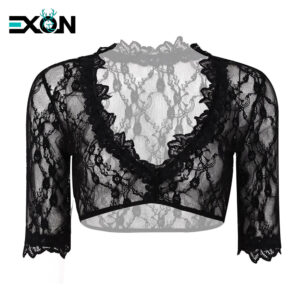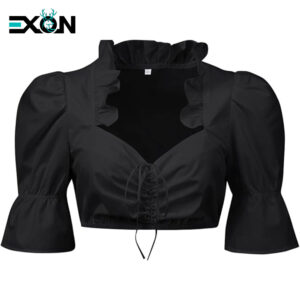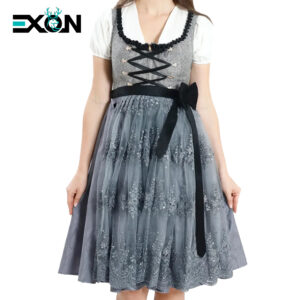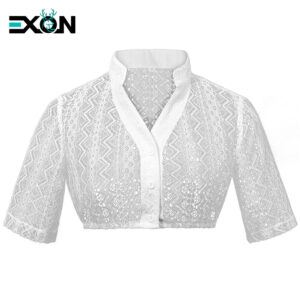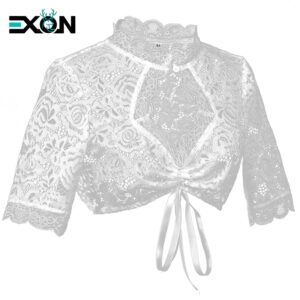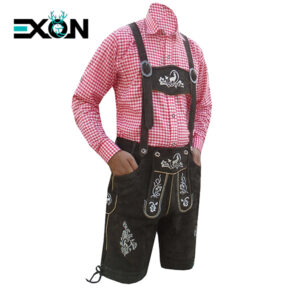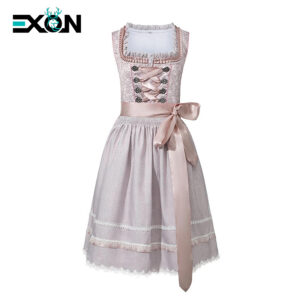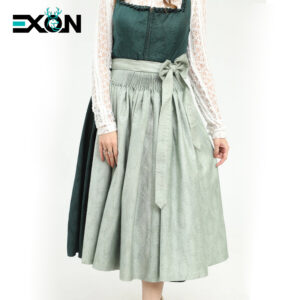Description
The Timeless Dirndl: A Emblem of Alpine Elegance and Tradition
The Timeless dirndl is far more than just a dress; it is a potent symbol of Alpine culture, a garment steeped in history that has gracefully evolved into a timeless icon of feminine charm, craftsmanship, and regional identity.
Primarily associated with Germany (especially Bavaria), Austria, South Tyrol in Italy, and Switzerland, the dirndl is a complex ensemble where every element, from the cut of the bodice to the knot on the apron, tells a story.
Historical Roots: From Humble Beginnings to High Fashion
The dirndl’s origin is a tale of practical peasant wear transforming into a celebrated national costume (Tract).
-
18th Century: The Working Garb: The term “dirndl” itself is a diminutive of “Dern,” which in various German dialects originally meant “young woman” or “maid.” It was the common working dress for female servants and farmers in the Alpine regions.
-
Its design was purely functional: a durable, high-necked blouse, a fitted bodice that provided support for physical labor, a full skirt that allowed for ease of movement, and a practical apron to protect the dress underneath while working in the house or field.
-
19th Century: Romanticization and Adoption: The Romantic movement of the 19th century sparked a nostalgia for a idealized, rustic past. City dwellers and the upper classes began to see the rustic Tract as a fashionable and romantic link to nature and heritage. The dirndl was refined—made with finer fabrics like silk and velvet, decorated with intricate embroidery, and tailored to a more fashionable silhouette. It became a Timeless symbol of national pride and cultural identity.
-
20th Century & Modern Day: After a dip in popularity post-WWII, the dirndl has experienced a massive resurgence since the late 20th century. Today, it is the quintessential attire for major festivals like Oktoberfest, Christmas markets, weddings, and folk celebrations.
Anatomy of a Dirndl: Deconstructing the Ensemble
A traditional dirndl consists of several key components, each with its own style and significance:
-
The Blouse (Dirndlbluse): Worn under the dress, the blouse is typically white or cream-colored and made of cotton, lace, or silk. It can have puffed, cap, or short sleeves and varies in cut from a modest high neckline to a deep, off-the-shoulder style (Schalkragen).
-
The Dress (Klein): This is the core of the outfit, comprising two main parts:
-
The Bodice (Moeder or Libel): This is the most defining element. It is tightly fitted and structured, often boned or padded to accentuate the bust and create a feminine hourglass figure. It typically features a deep square, round, or V-neckline and is fastened with hooks, laces, or buttons down the front or back.
-
The Skirt (Rock): The skirt is attached to the bodice at a high waistline. It is characteristically very full, featuring gathers or pleats that allow it to swish gracefully when dancing or walking.
-
-
The Apron (Schurz): Tied around the waist over the skirt, the apron is a non-negotiable part of a complete dirndl. While originally practical, its placement and the style of its knot are now loaded with meaning regarding the Timeless wearer’s romantic availability.
-
Accessories: No dirndl is complete without its finishing touches:
-
The Knot’s Secret Code: The way the apron is tied is a playful, though not always strictly adhered to, form of communication:
-
Left Side: The bow is tied on the wearer’s left side, indicating she is single and possibly looking for a partner.
-
Right Side: The bow is on the right, signaling she is taken, married, or in a relationship.
-
Front and Center: Worn by virgins (a very traditional and now rarely used meaning) or often by waitresses and children.
-
Back Center: This could signify a widow or, less commonly, a waitress.
-
-
Bodice Jewelry: A delicate chain with a medallion or a edelweiss pendant is often tucked into the bodice.
-
Other Elements: A snug, embroidered bolero jacket (Dirndljäckchen) can be worn over the blouse for cooler weather. Footwear is typically flat, sturdy shoes like Haferlschuhe (characteristic laced shoes) or ballet flats. Hair is often styled in braids and adorned with a decorative hairpin or a Gams Bart (a tuft of chamois hair) on a hat.
-
Cultural Significance and Modern Interpretations
The dirndl’s power lies in its duality. It is a garment that simultaneously represents:
-
Regional Identity: Different regions have their own distinct styles, colors, and embroidery patterns (Bauer muster), making the dirndl a marker of one’s specific homeland.
-
Femininity and Celebration: The dirndl is designed to flatter the female form. Wearing one is an expression of joy and celebration, inextricably linked to community, music, dance, and festivity.

